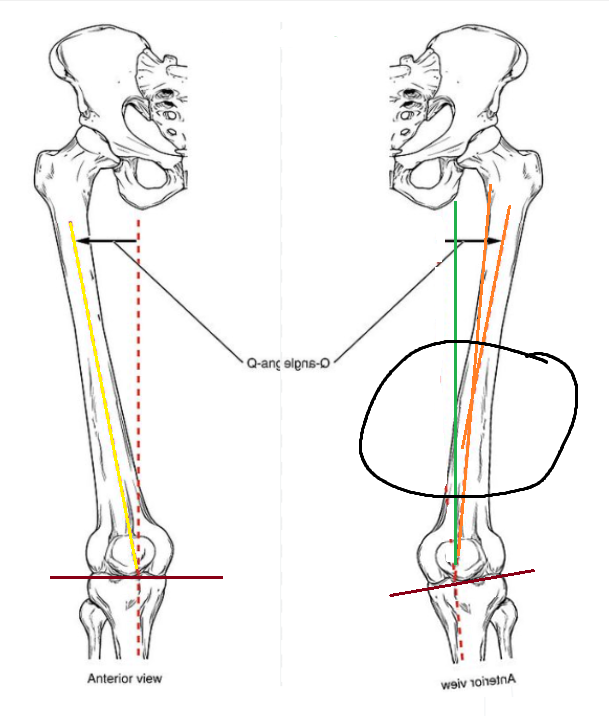What about femurs? I always thought tibias are going to lengthen straightly, as compared with femurs that lengthen into knock knees (valgum). Or maybe tibias tend to lengthen into varum, or vice versa?
From my personal research - tibias lengthening may cause varum or valgum only if internal nail was bent due to excessive load OR tension in your muscles from one side. However, in ideal case if everything goes well tibia lengthening does not affect position of knees as the bone itself is straight and perpendicular to the ground when you stay so if it's kept straight - you're good.
Femur lengthening over internal nail will change the mechanical angle for sure. You may not get valgum only if you already had varum (and if it was caused by femur solely) initially. I've also read about cases in russian clinics where extra correction is performed once your lengthening is done. Correction is done by taking small part of your bone and changing it's angle a bit somewhere in the middle (it get's temporary fixated in this place with a metal plate afterwards) of bone to, let's say, direct femurs a bit more to outer side. Here's what I mean:

This is a big compromise because - yes, it will help with knock knees as the distance between your knees is restored, however:
1) your bone now get's two axis (right picture, orange lines) instead of one axis in a healthy bone (left image, yellow line). This means that place where two axis are crossed will always get excessive load.
2) Inner part of knee will also get an extra angle meaning that load will not be distributed correctly.
A person that is originally tall does not have this problem because even though they have longer femurs, their femur neck to femur itself angle is different. So the only way to restore original knees alignment for short person doing LL on femurs over internal nail would be to also do manipulation over the place where femur and femoral neck are connected to correct the angle there, however, I have not heard of such procedure in any clinics.

 Author
Topic: Femur lengthening and mechanical/anatomical axis angles (Read 2546 times)
Author
Topic: Femur lengthening and mechanical/anatomical axis angles (Read 2546 times)
